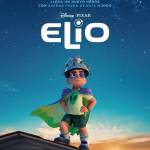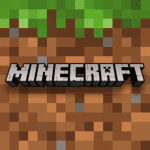Fable 2’s Dog Almost Didn’t Make It — How Persistence Turned a Nuisance into an Icon
2025-10-06
Let me take you back to the moment when one of gaming’s most memorable companions nearly vanished from the script. During Fable 2’s development, Peter Molyneux found himself defending a feature that, in its early state, was more headache than heart: the dog. What shipped as Albion’s loyal four-legged partner began as something loud, intrusive, and mechanically clumsy—so much so that cutting it would have been the easy, practical choice. But Molyneux doubled down. He argued that a silent, expressive companion could make the world feel warmer, the player’s journey more personal, and the act of exploration less lonely. That conviction mattered, because it forced the team to transform the dog from an attention-grabbing gimmick into a system that threaded utility, emotion, and readability into the fabric of a role-playing epic. The end result wasn’t just a pet following you around; it was a design statement: a companion that asked for almost nothing from the UI, yet constantly gave back in guidance, feedback, and storytelling texture.
Main Part
The raw problem was ugly. Early builds made the dog behave like a noisemaker with legs. It barked at the wrong times, drew focus away from quests, collided with the player, and fumbled pathing in tight spaces. Worse, it disrupted pacing—breaking the flow of fights and derailing quiet moments where the world was supposed to breathe. Producers and playtesters had a point: if a companion increases friction instead of clarity, it’s not a feature, it’s a tax. Molyneux reframed the mission with three pillars: be helpful, be legible, and be endearing. Helpful meant discovering treasure, clues, and threats before you did, nudging you toward secrets instead of stealing the spotlight. Legible meant sensible signals—ears pricking, a quick bark, a dash toward a dig spot—never a chorus, never a flood of noise. Endearing meant delight without demand: simple emotes, meaningful reactions to your morality, and moments of shared attention that didn’t pause the game or bury you in pop-ups. The dog wouldn’t ask for menus or micro-management; it would simply be there, making you better at being a hero.
Turning that vision into something that behaved was the real grind. The team reworked behavior priorities so the companion deferred to player intent: no barging into camera framing, no spamming sounds during dialogue, no pathing tantrums in towns. Cooldowns throttled vocal cues; line-of-sight checks and distance gating made barks feel purposeful; and collision tolerance kept the dog out of your way. Animations were tuned to read from the edge of your vision—tail flicks, head tilts, and quick accelerations telegraphing “follow me” without a word. The UI stayed light: instead of modal prompts, the dog’s body language and short, contextual motions did the talking. It synergized with Fable’s breadcrumb trail by subtly leading you to off-path rewards, while training books and upgrades taught the dog new tricks at a pace that respected your attention. Even morality tied back into presentation, with appearance and demeanor shifting to mirror the hero you were becoming. Under the hood, it felt like hundreds of tiny rules boiled down to one promise: never annoy, always help.
Crucially, the team wove the companion into Fable 2’s themes rather than treating it as a bolt-on. In combat, the dog supported rather than starved you of agency—distracting foes for a heartbeat so your choices still drove the outcome. Outside fights, it served as a living quest marker with charm, turning a routine stroll into a chance encounter with secrets and silver keys, or a pointer toward buried loot after you invested in the right training. The narrative paid it off with heart: the final choice at the end—love, sacrifice, or wealth—landed harder because losing or restoring your companion felt personal, not abstract. That is the mark of good integration: systems echo story beats, and story beats validate mechanics. Post-launch, the companion became shorthand for a design ideal many studios chased in later years—companions that are expressive, low-friction, and useful across the entire play loop. It’s easy to forget how radical that felt at the time, when most helpers either nagged or disappeared into the background.
Conclusion
What sticks with me isn’t just that the dog survived; it’s why it mattered that someone fought for it. Great features often start out rough, noisy, and misunderstood. The leader’s job is to protect the seed, define the target experience, and build guardrails so iteration can carve away the pain. Fable 2’s companion works because it respects the player’s time and attention, translates intent without menus, and expresses emotion through motion and context rather than constant chatter. The lesson for designers is clear: if a companion can’t justify its presence every minute it’s on screen, it will feel like baggage. But if it anticipates needs, communicates cleanly, and earns affection through small, reliable wins, it becomes the glue that holds a world together. Molyneux’s fight wasn’t just about saving a dog; it was about defending a thesis on how players bond with virtual spaces. Albion felt more human because a quiet partner shared the road—and once you’ve felt that, it’s hard to imagine the journey any other way.






